This article was co-authored by Monica Morris. Monica Morris is an ACE (American Council on Exercise) Certified Personal Trainer based in the San Francisco Bay Area. With over 15 years of fitness training experience, Monica started her own physical training practice and gained her ACE Certification in 2017. Her workouts emphasize proper warm-ups, cool-downs, and stretching techniques.
There are 11 references cited in this article, which can be found at the bottom of the page.
wikiHow marks an article as reader-approved once it receives enough positive feedback. This article received 12 testimonials and 98% of readers who voted found it helpful, earning it our reader-approved status.
This article has been viewed 1,320,973 times.
It’s important to keep your knees strong and healthy so that your mobility doesn’t deteriorate as you grow older. We often take the health of our knees for granted, not noticing there’s a problem until everyday activities like lifting boxes or walking downhill become painful. Take the following measures to strengthen your knees and ensure you’ll stay active for as long as possible.
Steps
Understanding Knee Health
-
1Get to know basic knee anatomy. The knee is the largest joint in the body and is made up of the lower end of the thigh bone (femur), the upper end of the shin bone (tibia), and the kneecap (patella). These bones are connected by ligaments and cartilage, including the meniscus, which cushions the area where the femur and tibia meet.
- Degrees are used to measure the range of motion in your knees certain activities require. You need 65° range of motion to walk, 70° to pick up something from the floor, 85° to climb stairs, and 95° to sit and stand comfortably.[1]
-
2Be aware of common knee injuries. As one of the most heavily used joints in the body, the knee is subject to a range of injuries. The more you know, the better prepared you will be to avoid circumstances that lead to or exacerbate injuries.[2]
- The iliotibial band, or IT band, is the area of thicker tissue that runs from the outside of the pelvis to the outside of the knee. The IT band helps to stabilize the knee during physical activity. It can become inflamed and painful when it is overused, leading to iliotibial band syndrome (ITBS). Runners, hikers, and other active people often experience this injury.
- The anterior cruciate ligament (ACL) is commonly torn during activities like running, jumping, and landing from a jump. Other ligaments may be torn as well.
- The meniscus, which acts as a shock absorber to protect the knee joint from impact, can be easily torn during activities like twisting, pivoting, or decelerating.
Advertisement -
3Understand how other parts of the leg affect the knees. The knees are supported by the other muscles in the legs, especially quadriceps, hamstrings, and glutes. Keeping these muscles strong is crucial to having strong knees and preventing injury.
- Muscles like the quadriceps, hamstrings, hips, and glutes act as stabilizers for your knee. To help improve your stability, you should exercise and stretch these muscles.[3]
Exercising to Strengthen Your Knees
-
1Stretch your IT band. Spending some time stretching and warming up your IT band before diving into a strenuous activity is a good way to keep your knees strong.[4]
- Stand with your left foot crossed over your right and stretch your arms above your head. Lean your upper body as far as you can to the left without bending your knees. Repeat with your right foot crossed over your left, leaning your upper body to the right.
- Sit on the floor with your legs stretched in front of you. Cross one over the other and pull your knee as close as you can toward your chest, holding it in place for a few seconds. Repeat with your other leg.
- Take a brisk walk before launching into a more complicated exercise to give your IT band a chance to loosen up.
-
2Do rehabilitative exercises after surgery. If you have had knee surgery or a knee replacement, you may need to do certain exercises and stretches to increase your range of motion. Follow your doctor's instructions on when to start stretching after surgery. Some general moves you can try include:
- Seated knee flexion: Sit on a firm chair, and slide one foot back under the chair as far as you can. Your thighs should remain firm on the chair. Hold for five seconds before sliding back forward. Repeat with the other leg.
- Seated knee kick: sit on a firm chair with your legs bent. Raise one leg slowly until it is completely straight. Hold for five seconds before lowering the leg. Repeat on the other side.
- Straight leg raise: Lie down with one leg bent and the other straight against the ground. Raise the straight leg up slowly before lowering it back down. Repeat on each side ten times.[5]
-
3Work out your quadriceps. The quadriceps are the muscles in the front of your thighs. Strong quadriceps will help improve strength and mobility in your legs. Try exercises that target these muscles.
- Thigh squeezes may help those who have had long-term knee problems or knee surgery. Lie down with your legs straight. Squeeze the muscles at the front of your thigh, and hold it for five seconds before releasing. Make sure to do this with both legs.[6]
- Do lunges to work on your quadriceps. Stand upright with your hands on your hips. Take a big step forward with your left foot, and lower your body toward the floor until your left leg is bent at a right angle. Your back knee will lower until it is nearly touching the floor. Repeat this exercise several times, then switch to the other side.
- Low-impact exercise machines such as a stationary bike or elliptical machine can help you work out your quads with minimal or no impact. These are safer activities for someone who has arthritis or a previous knee surgery than running is.[7]
-
4Strengthen your hamstrings. The hamstring is located at the back of the thigh. Doing hamstring stretches once a day and exercises twice or more a week can help relieve knee pain and improve mobility.
- Touch your toes. Stand straight, and bend forward while keeping your spine straight and your abs contracted. Straighten back up. If you are having trouble reaching your toes or ankles, place a chair in front of you. Bend forward to try to touch the seat of the chair.[8]
- Heel lifts might also help. Start by either standing feet parallel and facing forward. Lift your heel back to try to touch your buttocks.
- Try donkey kicks. Stand behind a chair, and place your hands on the chair back. Raise one foot behind you, with the knee bent. Lower the foot back down to the ground. Repeat with both legs.
- To do a bridge, lie down with your knees bent. Squeeze your glutes as you slowly lift your hips a few inches off of the ground. Hold for a second before slowly lowering yourself back down. This exercise will not only work your hamstrings but also your hips and glutes.[9]
-
5Exercise your hips and glutes. The hip flexors and glutes are both involved in the movement and mobility of the leg. Keeping them strong can prevent putting too much strain on the knee. As a bonus, many exercises that work the hips and glutes also help the hamstrings.
- Try a clamshell. Lie on your side with your knees bent. Lift the knee of your top leg, but keep your feet touching. Hold for a second before lowering. Repeat ten or twelve times before switching to the other leg.[10]
- Squats with a short range of motion are good even for people with knee problems. Stand upright and simply squat to the ground, bending your knees and keeping your back upright. For a less strenuous version of this exercise, practice standing in front of a chair, sitting, and standing again.
-
6Try recreational activities that build full-body muscle tone. If your leg muscles aren’t strong, your knees won’t be either.
- Yoga is a low-impact activity that tones your leg muscles.
- Swimming is another great way to build leg and knee strength and flexibility because it is a no-impact activity.
- Walking and biking keep your legs and knees in shape for more strenuous activities.
-
7Be careful with jumping. Jumping exercises, such as jump rope, can help build the muscles in your leg, but if you do them improperly, it can injure your knees. If you do decide to jump, learn to do it properly. Landing on straight knees puts too much pressure on your joint, and can eventually lead to injury. For stronger knees, practice landing in a half-squat position with your knees bent and your shins vertical. If you cannot land with your shins vertical, then you may have alignment issues. Avoid jumping in this case.
Changing Your Lifestyle to Strengthen Your Knees
-
1Add anti-inflammatory foods to your diet. Joints become weakened and painful when they are inflamed, so adding foods that are known to be anti-inflammatory to your diet may help keep your knees strong. [11]
- Fish, flax seeds, olive oil, avocados, and whole fruits and vegetables are said to have anti-inflammatory properties.
-
2Make sure you get enough vitamin E. Vitamin E is believed to hinder enzymes that break down the cartilage in the joints. Spinach, broccoli, peanuts, mango, and kiwi are excellent sources of vitamin E. [12]
-
3Eat more calcium. Bone health is also important for knee strength, so take measures to prevent osteoporosis. Cow milk, yogurt, soy, cheese, and goat milk are good sources are calcium. Leafy greens are also beneficial.
-
4Stop doing activities that hurt. If you experience a lot of knee pain doing certain activities, chances are you aren’t strengthening your knees by continuing. Try lower impact exercises for a while to give your knees a rest. After a few months of focusing on leg muscle strength and flexibility, you may find you’re able to do your favorite activities without pain.
Sample Exercises and Stretches
Expert Q&A
Did you know you can get expert answers for this article?
Unlock expert answers by supporting wikiHow
-
QuestionWhat are the symptoms of knee strain?
 Jonathan Frank, MDDr. Jonathan Frank is an Orthopedic Surgeon based in Beverly Hills, California, specializing in sports medicine and joint preservation. Dr. Frank's practice focuses on minimally invasive, arthroscopic surgery of the knee, shoulder, hip, and elbow. Dr. Frank holds an MD from the University of California, Los Angeles School of Medicine. He completed an orthopedic residency at Rush University Medical Center in Chicago and a fellowship in Orthopedic Sports Medicine and Hip Preservation at the Steadman Clinic in Vail, Colorado. He is a staff team physician for the US Ski and Snowboard Team. Dr. Frank is currently a scientific reviewer for top peer-reviewed scientific journals, and his research has been presented at regional, national, and international orthopedic conferences, winning several awards including the prestigious Mark Coventry and William A Grana awards.
Jonathan Frank, MDDr. Jonathan Frank is an Orthopedic Surgeon based in Beverly Hills, California, specializing in sports medicine and joint preservation. Dr. Frank's practice focuses on minimally invasive, arthroscopic surgery of the knee, shoulder, hip, and elbow. Dr. Frank holds an MD from the University of California, Los Angeles School of Medicine. He completed an orthopedic residency at Rush University Medical Center in Chicago and a fellowship in Orthopedic Sports Medicine and Hip Preservation at the Steadman Clinic in Vail, Colorado. He is a staff team physician for the US Ski and Snowboard Team. Dr. Frank is currently a scientific reviewer for top peer-reviewed scientific journals, and his research has been presented at regional, national, and international orthopedic conferences, winning several awards including the prestigious Mark Coventry and William A Grana awards.
Sports Orthopedic Surgeon & Joint Preservation Specialist
-
QuestionWhat can I eat to strengthen my knees?
 Michele DolanMichele Dolan is a BCRPA certified Personal Trainer in British Columbia. She has been a personal trainer and fitness instructor since 2002.
Michele DolanMichele Dolan is a BCRPA certified Personal Trainer in British Columbia. She has been a personal trainer and fitness instructor since 2002.
Certified Fitness Trainer
-
QuestionWhat is the best exercise for bad knees?
 Michele DolanMichele Dolan is a BCRPA certified Personal Trainer in British Columbia. She has been a personal trainer and fitness instructor since 2002.
Michele DolanMichele Dolan is a BCRPA certified Personal Trainer in British Columbia. She has been a personal trainer and fitness instructor since 2002.
Certified Fitness Trainer
Warnings
- Running on a hard paved surface can destroy your knees over time. Always wear proper running shoes, and don't overdo the running.⧼thumbs_response⧽
- If you are experiencing any pain from the activities you do, stop right away.⧼thumbs_response⧽
- Don't twist your feet in such a way that your knees are wrenched sideways. You can permanently stretch or tear the ligaments that hold your knee together (ligaments, unlike muscles, are not supposed to stretch).⧼thumbs_response⧽
- Before working out your quadriceps, you should stretch your quad tendons to loosen up the muscles.⧼thumbs_response⧽
References
- ↑ https://www.peerwell.co/blog/2017/01/13/range-of-motion-after-joint-replacement-surgery/
- ↑ http://orthoinfo.aaos.org/topic.cfm?topic=a00325
- ↑ http://robertsontrainingsystems.com/blog/knee-stability-after-knee-surgery/
- ↑ http://www.runnersworld.com/health/build-better-knee
- ↑ https://www.pennmedicine.org/~/media/documents%20and%20audio/patient%20guides%20and%20instructions/musculoskeletal/knee_replacement_home_exercise_program.ashx?la=en
- ↑ https://www.allinahealth.org/Health-Conditions-and-Treatments/Health-library/Patient-education/Total-knee-Replacement/Strengthening-exercises-before-surgery/
- ↑ http://www.prevention.com/fitness/best-exercises-if-you-had-a-knee-replacement/slide/1
- ↑ http://www.arthritis-health.com/treatment/exercise/knee-stretches
- ↑ https://www.pennmedicine.org/~/media/documents%20and%20audio/patient%20guides%20and%20instructions/musculoskeletal/knee_replacement_home_exercise_program.ashx?la=en
- ↑ http://www.prevention.com/fitness/best-exercises-if-you-had-a-knee-replacement/slide/3
- ↑ https://www.fammed.wisc.edu/files/webfm-uploads/documents/outreach/im/handout_ai_diet_patient.pdf
- ↑ www.hsph.harvard.edu/nutritionsource/vitamin-e
About This Article
To strengthen your knees, try thigh squeezes and lunges to work out your quadriceps, or use low-impact exercise machines like stationary bikes or ellipticals to work out your quads with minimal or no impact. Other leg exercises like squats and bridges can also help you strengthen your legs and knees. Adding anti-inflammatory foods like fish, flax seeds, olive oil, and avocados to your diet, along with increasing your daily calcium intake, may improve knee health. To learn about other knee-strengthening exercises you can try, read on!


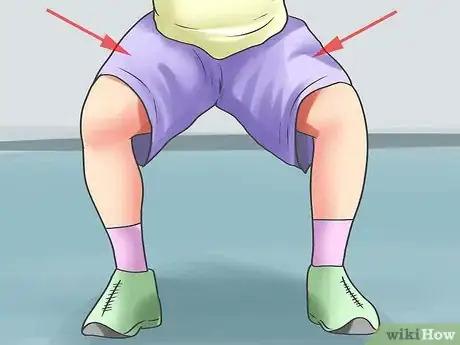
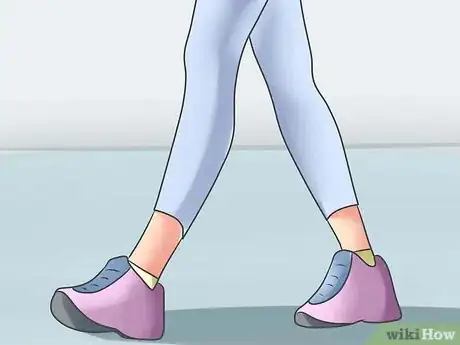

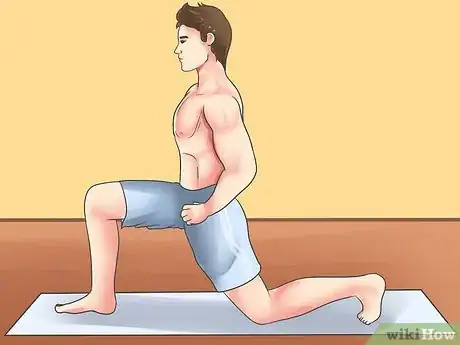
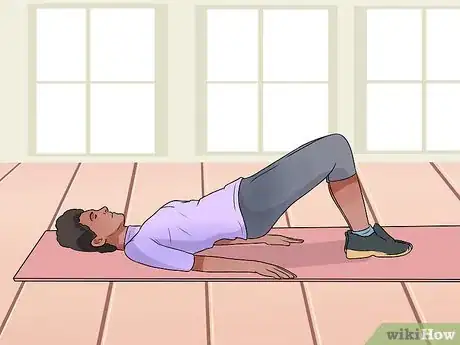
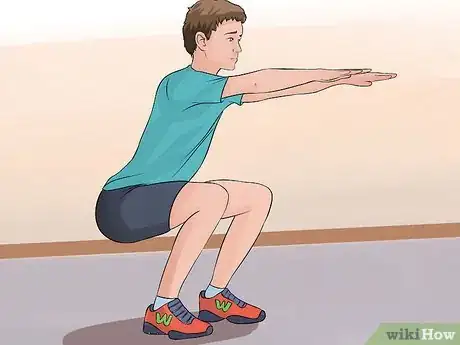


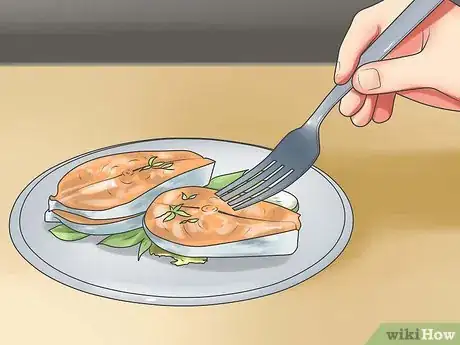


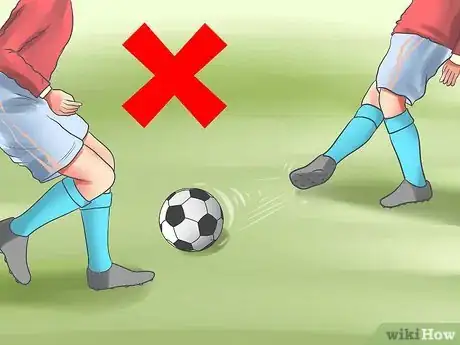






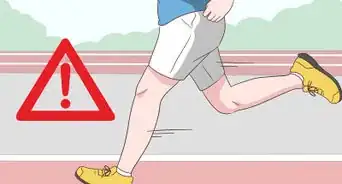





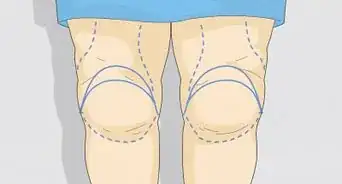

















































Medical Disclaimer
The content of this article is not intended to be a substitute for professional medical advice, examination, diagnosis, or treatment. You should always contact your doctor or other qualified healthcare professional before starting, changing, or stopping any kind of health treatment.
Read More...